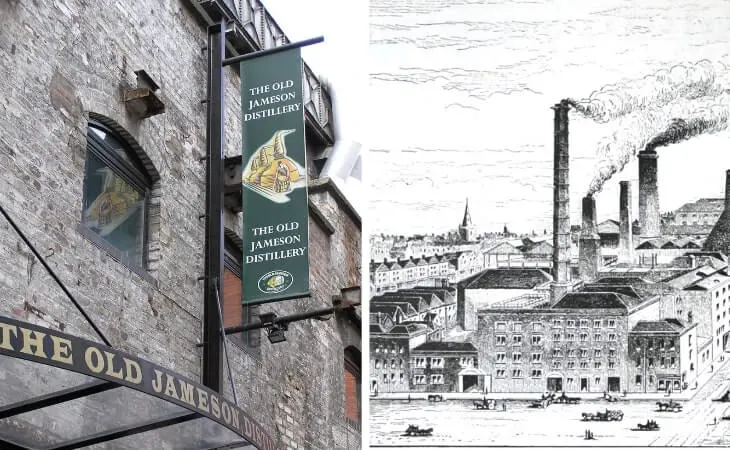A visit to Dublin Zoo is one of the most popular things to do in Dublin with kids.
However, Dublin Zoo is brilliantly run, and there’s plenty here to keep those ‘young at heart’ entertained for several hours, too.
Situated inside Phoenix Park and open to the general public since 1831, it’s a must-see when visiting the nation’s capital city.
In the guide below, you’ll find info on everything from opening hours and Dublin Zoo tickets to the history of the Zoo and more.
Some quick need-to-knows before you visit Dublin Zoo
Although a visit to see the Dublin Zoo animals is fairly straightforward, there are a few need-to-knows that’ll make your visit that bit more enjoyable.
1. Location
Dublin Zoo has occupied the same site since it was founded in 1830. Nestled between the North Road that backs onto Stoneybatter, and the southeast corner of the Phoenix Park.
2. Opening hours
Open every day from 09:30-6:00 pm, Monday to Sunday, and the last admission is at 5:00 pm. It’s worth noting, however, that for those who prefer less crowded times visit at opening, or before 12pm. The zoo tends to be busiest from 12:30-2:30 pm.
3. Dublin Zoo tickets
Dublin Zoo tickets vary in price depending on when and where you purchase them. Make sure to go online and purchase your tickets early to avail of the best price. Dublin Zoo tickets cost:
- Adult: €22.50 at the gate and €19 if booked online 2 days in advance
- Kids under 3: Free
- Kids 3-15: €17 at the gate and €14 if booked online 2 days in advance
- OAPs over 65: €17.50 at the gate and €14.50 if booked online 2 days in advance
4. Parking
If visiting the zoo via car, there are two nearby car parks; Dublin Zoo car park (here on Maps), and Lords Walk car park (here on Maps); both are affordable options for all-day parking, or for short-term parking to explore the Phoenix Park.
5. Places to eat
Dublin Zoo has a variety of eateries and refreshment options for its visitors. From Meerkat Restaurant and The Cove to Nakuru cafe (Starbucks) there’s plenty to choose from. There’s also lots of hotels near Dublin Zoo if you need a place to stay.
6. Annual pass
If you visit regularly, the Dublin Zoo Annual Pass is a no brainer. You can get a Family Pass for €215 and an Individual Pass for €155. For those that visit with several kids in toe numerous times per year, the Dublin Zoo Annual Pass should save you a few quid!
A brief history of Dublin Zoo

Photo by Dawid K Photography (Shutterstock)
Dublin Zoo was founded as a private society by anatomists and physicists in 1830 and was initially financially supported by wealthy subscribers. In 1831, the zoo first opened its doors to the general public.
By 1840 Dublin Zoo took the radical approach of charging a penny fee for entrance on Sundays, thus opening up the zoo to even greater numbers of Dublin residents.
This decision earned the zoo ever-lasting accolade and public support in an ongoing relationship with Dubliners to this day.
Exhibits
In 1840 the site’s modest site held 46 mammals, and 72 birds, which were donated by the London Zoo.
Now, after many changes over nearly 200 years, the site extends to 28 hectares, is home to over 400 rare and endangered animals, and attracts over 1 million visitors each year.
Philanthropy
In keeping with the society’s original aim and purpose, Dublin Zoo also supports a variety of ongoing partnerships and programs.
The Zoo also encourages these partnerships and relationships with other organisations, institutions, agencies, and individuals.
These relationships result in developing specific research and partnerships with universities, symposiums and workshops, and financially supporting a wide variety of conservation projects, the society actively contributes towards caring for and protecting the planet’s wildlife.
The Dublin Zoo animals awaiting your arrival

Photo by yykkaa (Shutterstock)
Dublin Zoo animals come in every size, shape and form imaginable, from the king of the jungle to the smallest of creepy crawlies.
Below, you’ll discover some of the Dublin Zoo animals that you can observe when you arrive. Dive on in!
1. The Family Farm
A wonderful stop for young and old alike, it’s just like being on a farm. With the usual resident farm animals to get to know (pigs, sheep, goats, ducks, chickens, rabbits and cows) and a life-sized model dairy cow you can practice your hand milking on, there’s bound to be something for everyone.
2. The Orangutan Forest
Pack your bags and head to the Bornean-inspired habitat that’s home to Dublin’s orangutans. As arboreal animals, they’re inclined towards scaling trees of formidable heights, rather than hanging out at ground level.
In this tropical rainforest environment, the Zoo’s orangutans will spend the bulk of their day climbing up and down the recently added trees; which range in height from 7 to 12 meters high, so don’t forget to look up!
4. Gorilla Rainforest
Arguably the most popular Dublin Zoo animals, the Rainforest is home to the largest living primates; gorillas from the western-lowland. A tranquil and calming setting, this environment is ideal for gorillas as it mimics the rocky outcrops, trees and dense foliage of the rainforest – exactly what these gorillas need for moments of privacy or seclusion when the world becomes too much.
5. Zoorasic World
With its connections to reptile species past and present, Zoorasic World is a not-be-missed stop around the zoo. Within the exhibit, you can see the life-size skeleton of a Tyrannosaurus rex, and 12 other species including crocodiles from West Africa, a forest dragon, pythons and snakes, and a turquoise dwarf gecko along with many more residents.
6. The South American House
The South American House is home to over nine species of monkeys, sloths, and birds from rainforests in both South and Central America. Each animal has unique camouflage or colours that match their extrovert or introvert personalities, with this adding to the dynamic as ‘roommates’ with other species that they live alongside at the zoo.
7. Kaziranga Forest Trail
If you’ve ever dreamt of seeing elephants bathing in pools, or making their way through the thick growth of a bamboo forest, then you’ll love the Kaziranga Forest Trail. Here, you’ll see these gentle giants in their specially designed habitat as they go about daily routines as they would in the wild. You can even have a sneak-peak online through a live webcam via the Zoo’s website.
8. The African Savanah
The largest of all of Dublin Zoo’s habitats, the African Savanna is where you’ll see graceful giraffes, southern white rhinos, ostriches, zebras, and the very special scimitar-horned oryx – an antelope species once thought to be extinct but brought back by a dedicated breeding program which reintroduced them to the wilds of Tunisia.
Things to do near Dublin Zoo
One of the reasons that a visit to is one of the more popular things to do in Dublin is due to the sheer volume of things there is to see and do nearby.
Below, you’ll find everything from mighty Dublin walks and fascinating museums in Dublin to more nearby attractions.
1. Áras an Uachtaráin (20-minute walk)

Photos via Shutterstock
Just up the road from Dublin Zoo is the home of the Irish President – Áras an Uachtaráin. The building, which has design ties to Washington D.C. and the White House, was founded in 1751 and is available to tour on most Saturdays, with guided tours throughout the day.
2. Kilmainham Gaol (20-minute walk)

Photos via Shutterstock
Just south of the river Liffey is Kilmainham Gaol. Opened in the late 18th century, Kilmainham has an interesting and historical story to tell. Built on the site of Gallows Hill and as a replacement of another nearby prison, this prison housed prisoners awaiting transportation to Australian convict colonies before also playing host to several leading Irish revolutionaries.
3. Irish Museum of Modern Art (25-minute walk)

Photos via Shutterstock
Just nearby is the Irish Museum of Modern Art, a 48-acre museum in the heart of Dublin. At this museum you’ll witness contemporary life and art directly interact with an historical setting; with over 3,500 artworks by Irish and international artists, the museum will entertain and enthrall.
4. Jameson Distillery Bow St (30-minute walk)

Photos in the Public Domain
On your way back into central Dublin, make sure you stop into the Jameson Distillery on Bow St. Here you’ll be able to take a tour or a tasting of Jameson’s finest whiskies, or you can always pick up whiskey-themed gifts from their on-site shop with distillery exclusives not available anywhere else.
FAQs about Dublin Zoo tickets and everything else
We’ve had a lot of questions over the years asking about everything from ‘Does Dublin have a zoo?’ (it does…) to ‘Is Dublin Zoo bigger than London Zoo?’ (it is!).
In the section below, we’ve popped in the most FAQs that we’ve received. If you have a question that we haven’t tackled, ask away in the comments section below.
What are the Dublin Zoo opening hours?
Dublin Zoo is open every day from 09:30-6:00 pm, Monday to Sunday, and the last admission is at 5:00 pm.
How much are Dublin Zoo tickets?
Dublin Zoo tickets vary in price depending on when and where you purchase them. For the best ticket price, make sure to book online in advance.
- Adult: €22.50 at the gate, €19 online
- Child (3 – 15): €17 at the gate, €14 online
- Senior Citizen: €17.50 at the gate, €14.50 online
- Family tickets from: €64 at the gate, €54 online
- Adult with Special Needs: €11 (not available online)
- Child with Special Needs: €7.25 (not available online)
- Carer: Free
- Student: €17.50 at the gate, €14.50 online
Where is the Dublin Zoo car park?
There are two car parks nearby (find links to their location at the top of this guide). Both are pay and display, but they’re right next to the Zoo.

